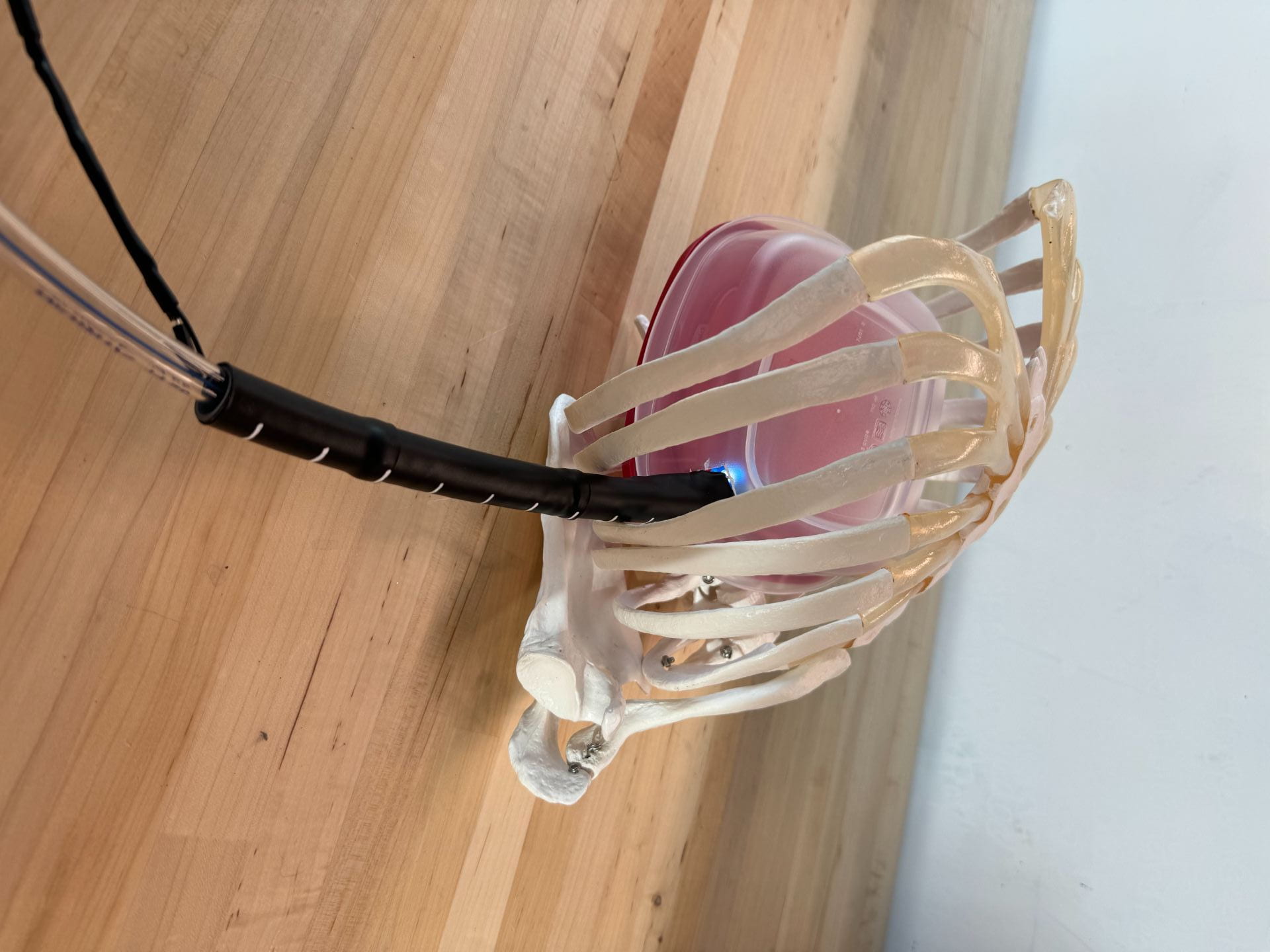Get to know our team on LinkedIN:
Caroline Adkins, Carmen Booher, Lawrence McCourt, Audrey Olenski, Eva Salmon
ThoraTech
Minimizing Tube Misplacement During Thoracostomy
Our prototype is a chest tube guidance device to reduce the chances of misplacement occurring during a thoracostomy. The tube creates a stable entry vector from the exterior of the body to the pleural cavity (represented by the container within the model ribcage), allowing the chest tube to easily enter the space. LEDs at the tip of the tube illuminate the pleural space and enable the user to confirm accurate placement by looking through the end of the device.
Project Description:
Our goal was to create a device to reduce the instances of misplacement that occur in thoracostomy performed in a trauma setting. Despite the fact that the procedure is performed over 100,000 times every year in the U.S., this procedure has a complication rate of up to 37% in many high patient-density treatment centers. Gathering information regarding how this procedure is performed led us to identify two main factors that led to this high complication rate: the blind nature of the procedure leading to a reliance on haptic feedback, and the varying body types of individuals seeking treatment. However, connecting with surgeons in hospitals across the country revealed other concerns to keep in mind regarding the design process that included how the device would impact the length of the procedure, and the material composition to ensure it did not introduce any further risks. With all that in mind, and a thorough investigation into prior attempts to remedy this issue, we developed a guidance tube that would aid in the accuracy of tube placement. The tube would be worn with a ring on the physician’s finger, and would be hooked inside the pleural space to create a clear vector from the proximal end outside the body to the distal end on the inside. The chest tube is then threaded inside the guidance tube, and LEDs near the distal end will give the physician a chance to visually confirm it is in the correct position. Tests were performed on the luminosity of the LEDs to confirm visual feedback needs were being met, as well as compressibility testing to ensure the device had a low risk of harming the body. Our testing culminated in a cadaver test, to ensure the procedure could be performed in an acceptable window in a realistic environment.



